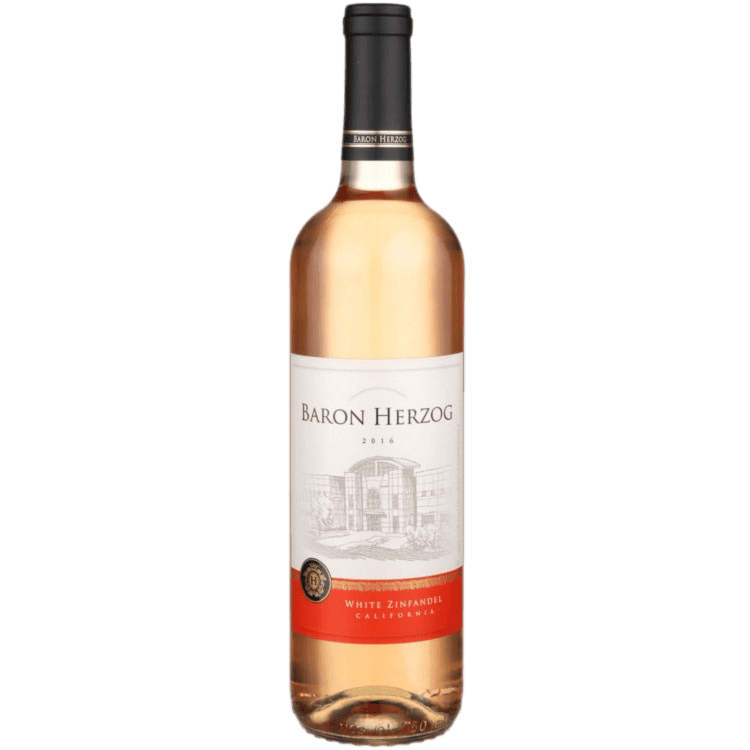
Baron Herzog White Zinfandel California - 750ML
Baron Herzog White Zinfandel California
Baron Herzog White Zinfandel is a lively and refreshing rosé wine from California. It is made from Zinfandel grapes, one of the most popular and versatile varieties in the US. This wine has a crisp texture, a bright color, and a distinctive fresh taste that makes it remarkably versatile. It pairs wonderfully with fish or poultry dishes, or as an aperitif. It is also kosher (Mevushal) and suitable for Passover.
Baron Herzog is a family-owned winery that has been producing quality wines since 1985. They are committed to using sustainable practices and respecting the environment. They source their grapes from some of the best vineyards in California, and use state-of-the-art technology and traditional methods to craft their wines.
Product Details:
- Country: USA
- State: California
- Brand: Baron Herzog
- Spirits Type: Wine
- Spirits Style: Rosé
- ABV: 11%
- Taste: Fruity and sweet, with aromas of strawberry and cotton candy
- Food Pairings: Fish, poultry, or as an aperitif
If you are looking for a delicious and affordable rosé wine, look no further than Baron Herzog White Zinfandel.
Remember: Drinking distilled spirits, beer, coolers, wine, and other alcoholic beverages may increase cancer risk, and, during pregnancy, can cause birth defects. For more information, visit www.P65Warnings.ca.gov/alcohol.

Explore a World of Spirits and Liquor through our Comprehensive FAQ Section.
Discover a World of Spirits and Liquor in our Helpful FAQ Section.
Types of Spirits
- Whiskey: Made from fermented grain mash and aged in wooden casks.
- Vodka: Typically distilled from grains or potatoes and known for its clear, neutral flavor.
- Rum: Produced from sugarcane byproducts like molasses or sugarcane juice.
- Tequila: Made from the blue agave plant, primarily in the area surrounding Tequila, Mexico.
- Gin: Distilled with botanicals, primarily juniper berries, giving it a distinctive flavor.
Production Process
- Fermentation: The process where yeast converts sugars into alcohol.
- Distillation: Separating alcohol from the fermented mixture to increase its concentration.
- Aging: Storing spirits in barrels to develop flavors over time.
Tasting and Pairing
- Tasting Notes: Learn to identify different aromas, flavors, and textures.
- Food Pairings: Discover which spirits complement various dishes, enhancing the dining experience.
Cocktails and Mixology
- Classic Cocktails: Recipes and techniques for making popular drinks like the Old Fashioned, Martini, and Mojito.
- Mixology Tips: How to balance flavors and create your own cocktail recipes.
History and Culture
Origins: The historical background of different spirits.
Cultural Significance: How spirits are enjoyed and celebrated around the world.

